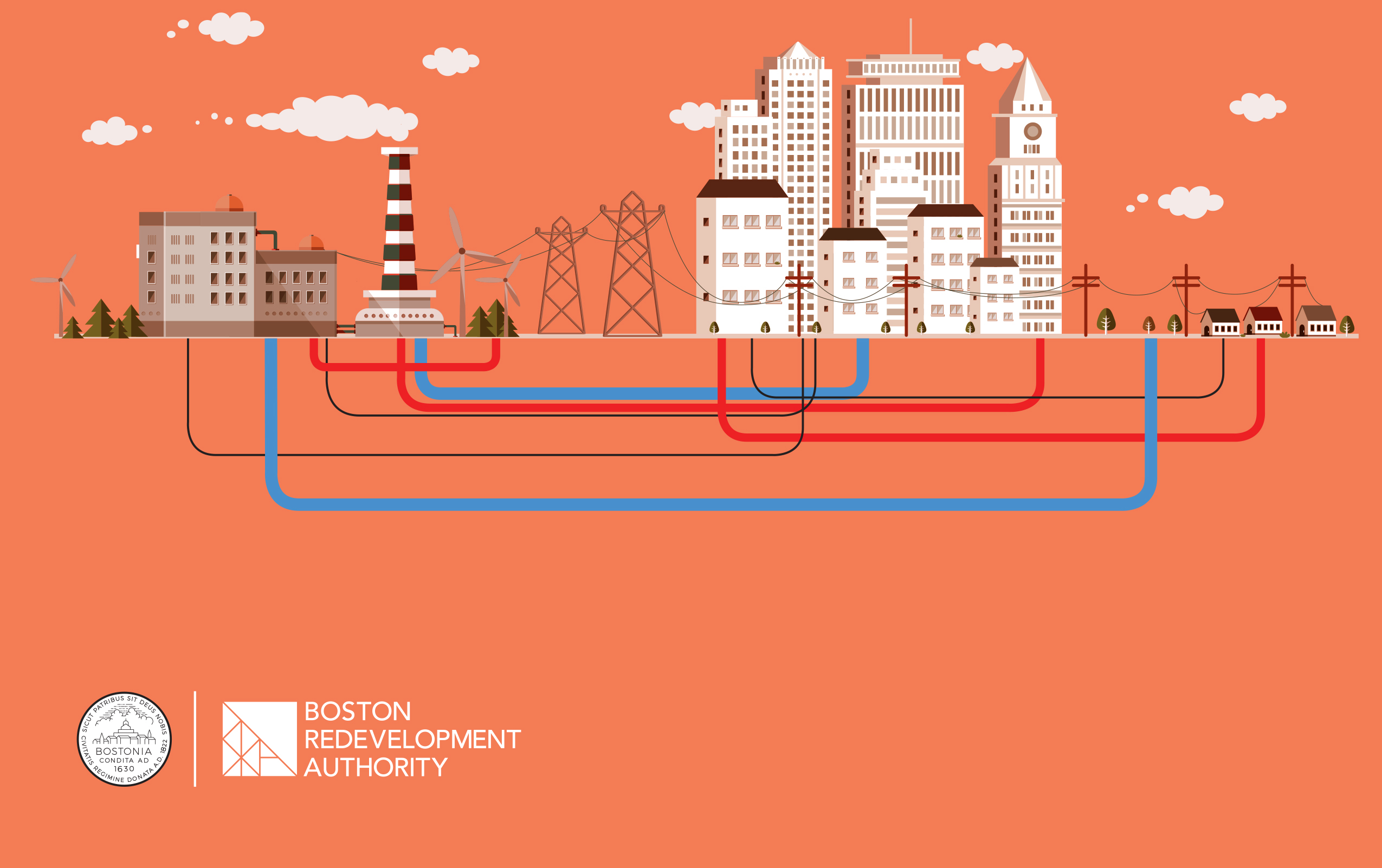Even though climate change is a global challenge, Barr’s climate strategies focus on the regional scale, advancing the leadership and solutions that have an impact here and also have potential to spur broader action. Cities are vital leaders of climate action. And sometimes a little extra staff capacity can go a long way towards extending that leadership. One exciting example is the recent release of the Boston Community Energy Study that identified district-level energy solutions that are more resilient, drive down greenhouse gas emissions, and cost less to run.
While Boston does not have direct control over energy system planning (that is done at the regional level by the grid operator), this has not stopped the City from aggressively identifying opportunities to increase efficiency, deploy renewables, and explore opportunities to promote innovation in the city. Over the past six years, Boston has developed a highly successful partnership with utilities to help residents and businesses drive down energy use through community education and energy upgrades. As a result, Boston now tops the American Council for an Energy-Efficient Economy’s Energy Efficiency Scorecard.
Two trends call for Boston to take the next steps in energy innovation. With increased frequency and intensity of severe weather events, the region is vulnerable to power outages. The city is also projected to grow in population and is in the midst of a construction boom, which will add pressure on the electric grid and increase emissions—unless we find ways to transform how we generate and use energy. To help Boston move towards more resilient, less carbon-intensive, and lower-cost energy approaches, in 2013, Barr made a challenge grant to the Boston Redevelopment Authority (BRA)—Boston’s agency responsible for planning and economic development—to create a new role for someone to focus exclusively on community energy solutions.

The BRA called this its “Eco-District Energy Fellow” and was fortunate to recruit Travis Sheehan, who had direct experience working on microgrids. Prior to working at the City, Travis was a consultant advising local governments on climate change strategies after receiving a double-master’s degree from MIT focusing on district energy policy and planning.
Travis has been working on several research initiatives, cultivating awareness and interest in community energy solutions, and scoping out pilot projects.To understand energy demand and to identify innovative local energy supply solutions, Travis commissioned a citywide energy study. It soon became the kind of project funders love to see—where our modest support ended up leveraging a wide range of new, additional resources. Travis secured funding from the Massachusetts Clean Energy Center, the U.S. Department of Energy, and the U.S. Department of Homeland Security; and he partnered with experts from MIT’s Sustainable Design Lab and Lincoln Laboratory, Google’s Project Sunroof, and Eversource.
The resulting report uncovers data that, as far as we know, no other city has pulled together before. By simulating every hour of energy use in every building across Boston—incorporating solar radiance, building typology, weather data, and a range of additional inputs—the study team created a first-of-its-kind urban energy demand map.

From this analysis, 42 “hot spots,” or high-potential areas, suitable for community energy solutions were identified. The criteria used to identify these areas included high energy use, critical/emergency facilities, and lower-income communities that would benefit from clean energy and reduced costs.
Potential costs and benefits of the community energy solutions were evaluated under two scenarios: one for maximizing reductions in greenhouse gas emissions and the other to maximize costs savings. The potential total benefits for the two scenarios ranged between $600 million and $1.7 billion over the 25-year analysis period. While more analysis is needed and much remains to be learned, the initial indicators are very positive.
In addition to the benefits for Boston, this study is a technical innovation that could be deployed in other cities to gain similar insights into local, clean energy infrastructure development opportunities.
To further help communities pursue potential projects identified in the study, the City established a partnership with the U.S. Department of Energy’s Climate Action Champions program. Property owners will be connected with experts that perform no-cost feasibility studies for new solutions like combined heat and power and microgrids.
It was our privilege to help Boston create this opening for a talented young leader whose efforts have now set the stage for the City to advance boldly towards its clean energy future.
Read more about the study in the recent media coverage:




